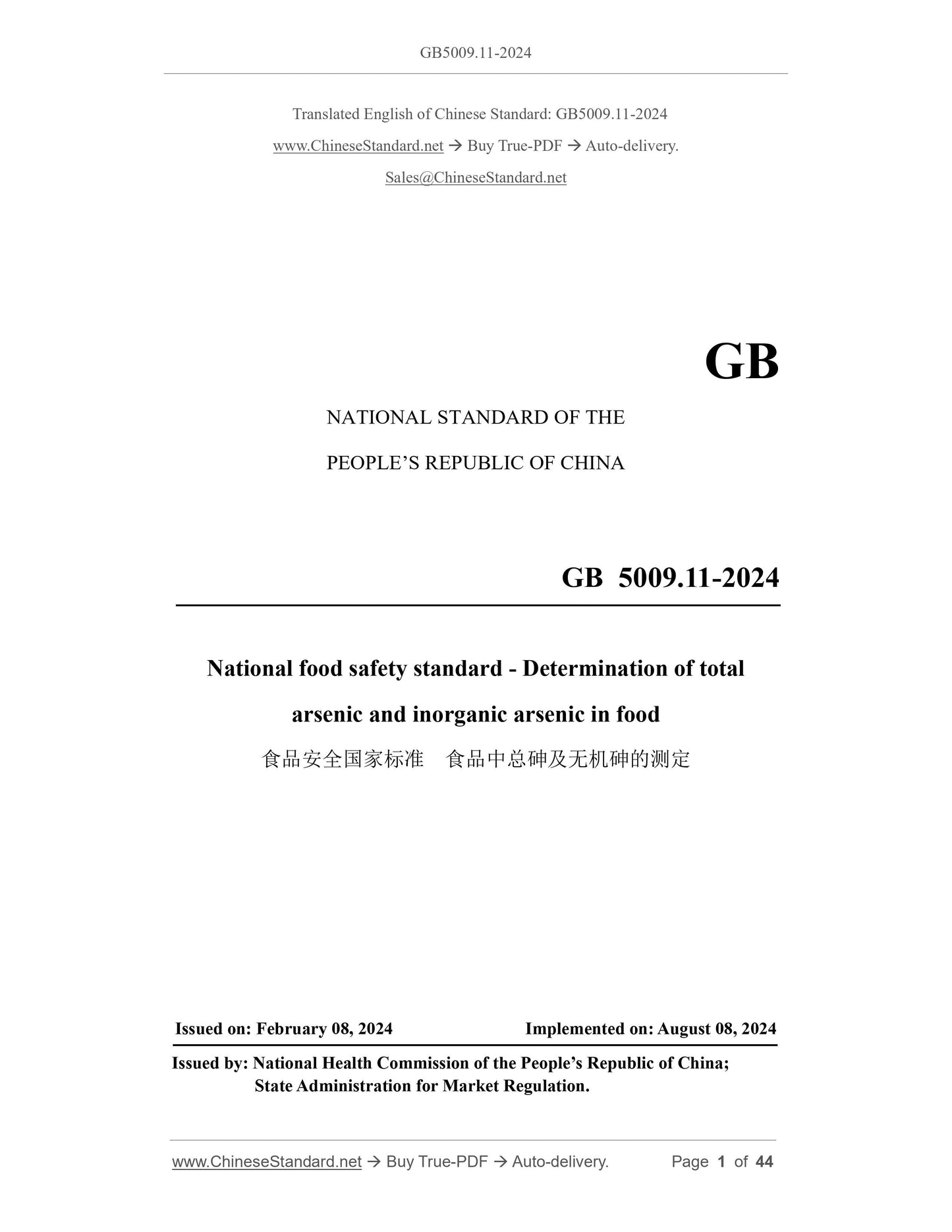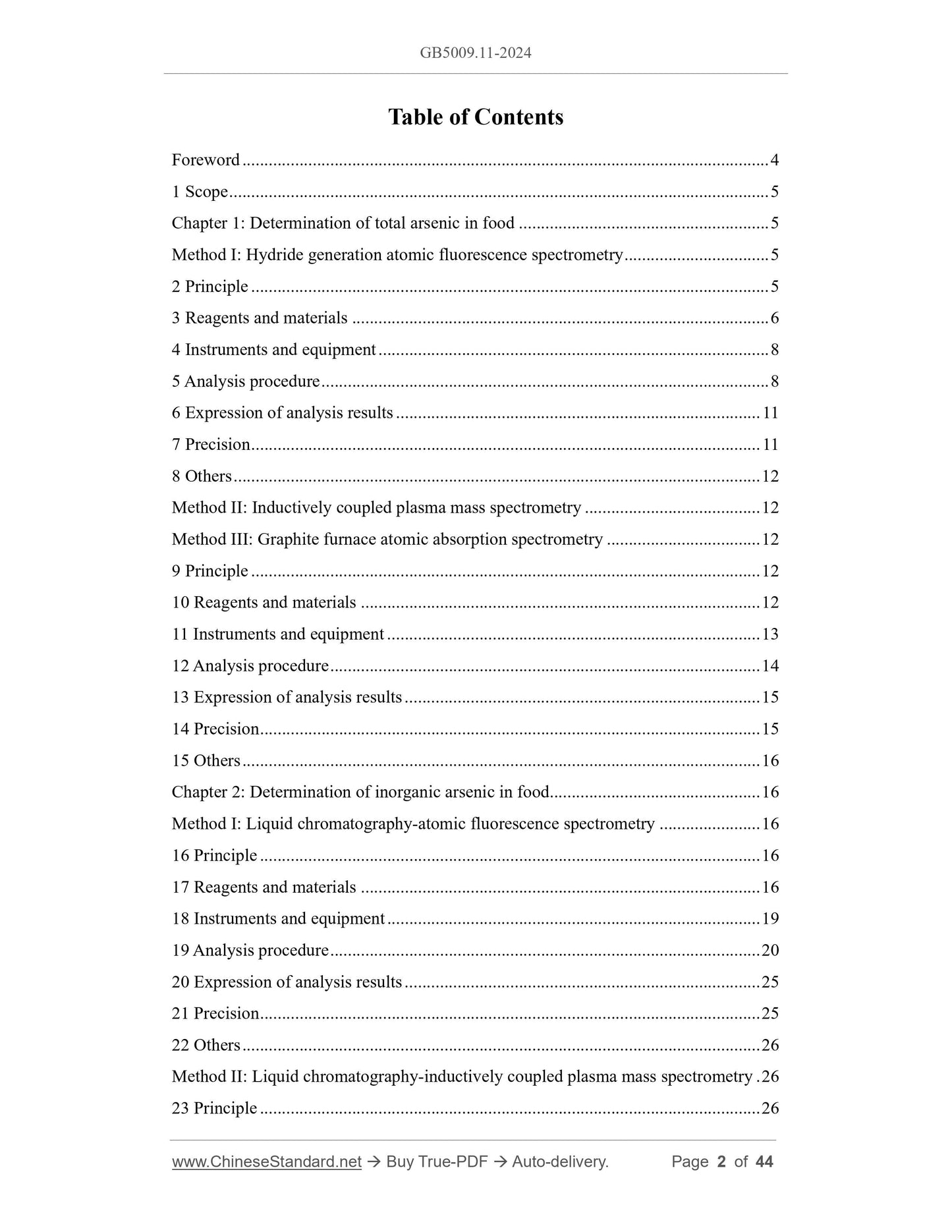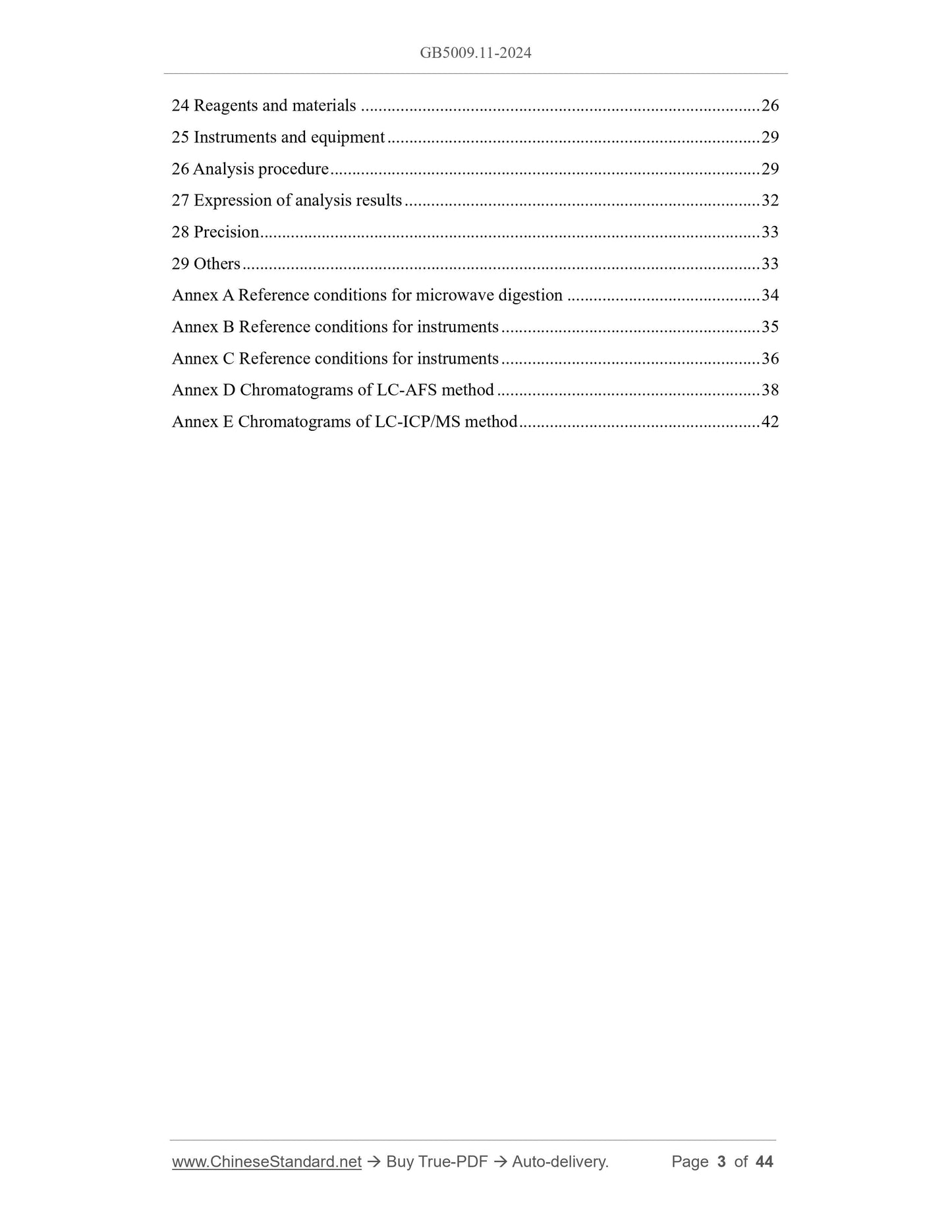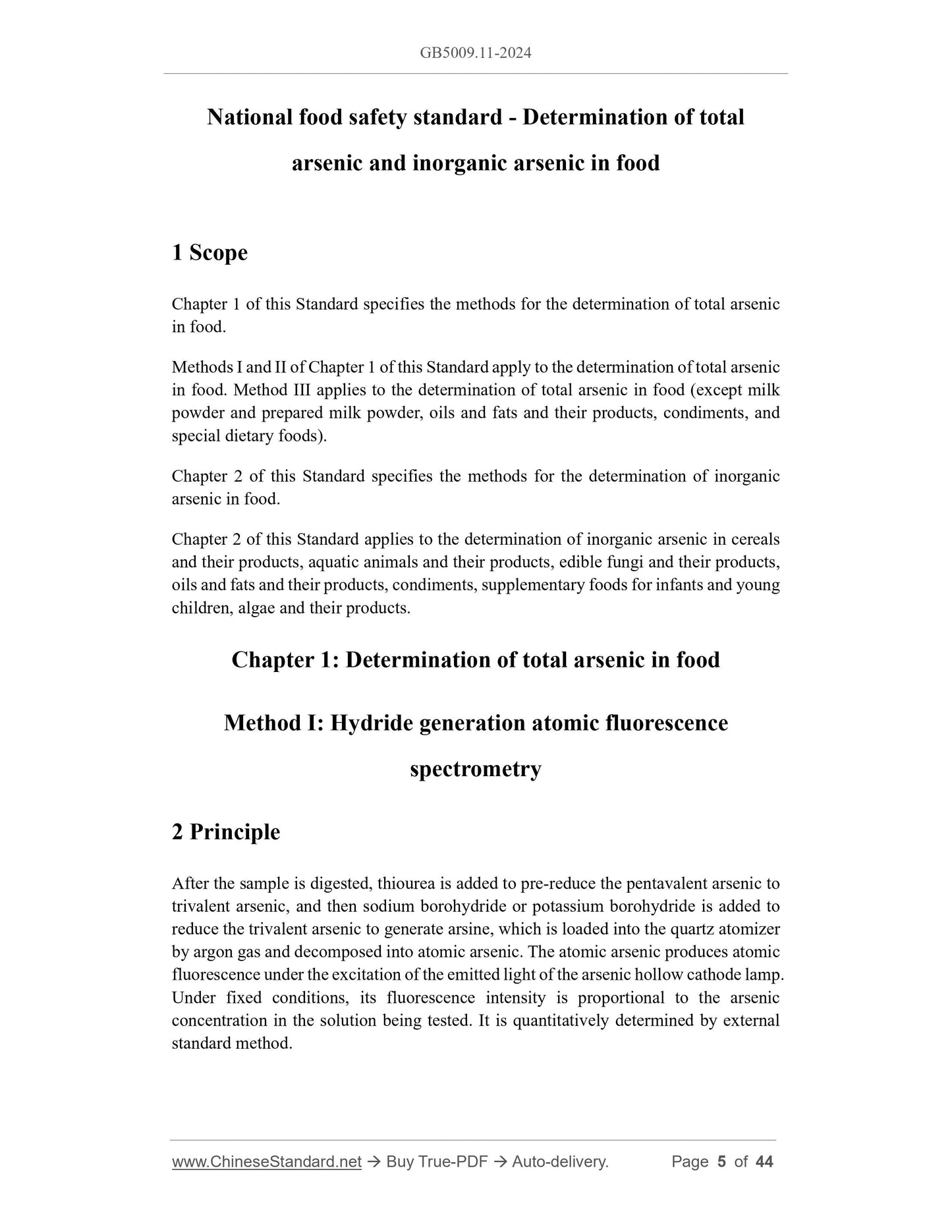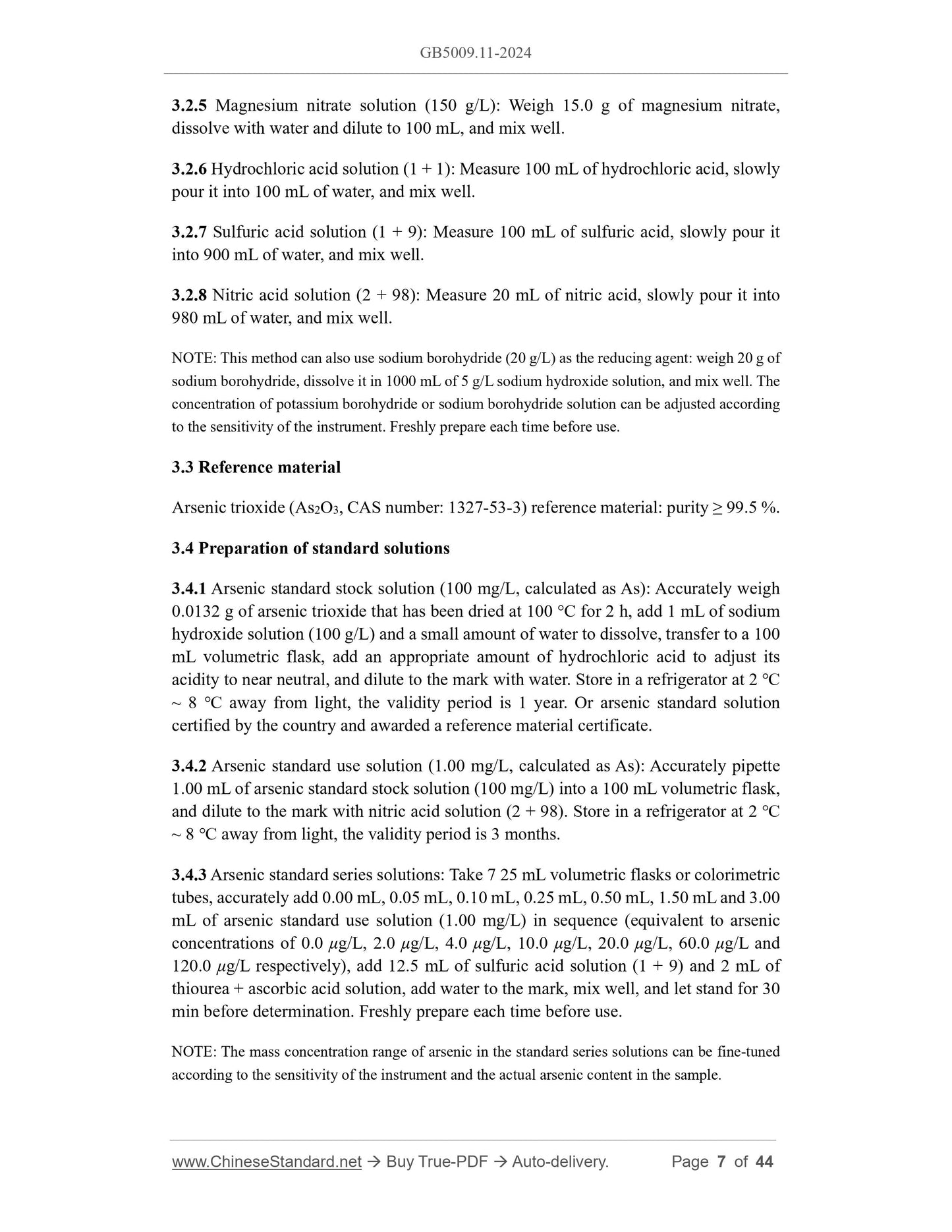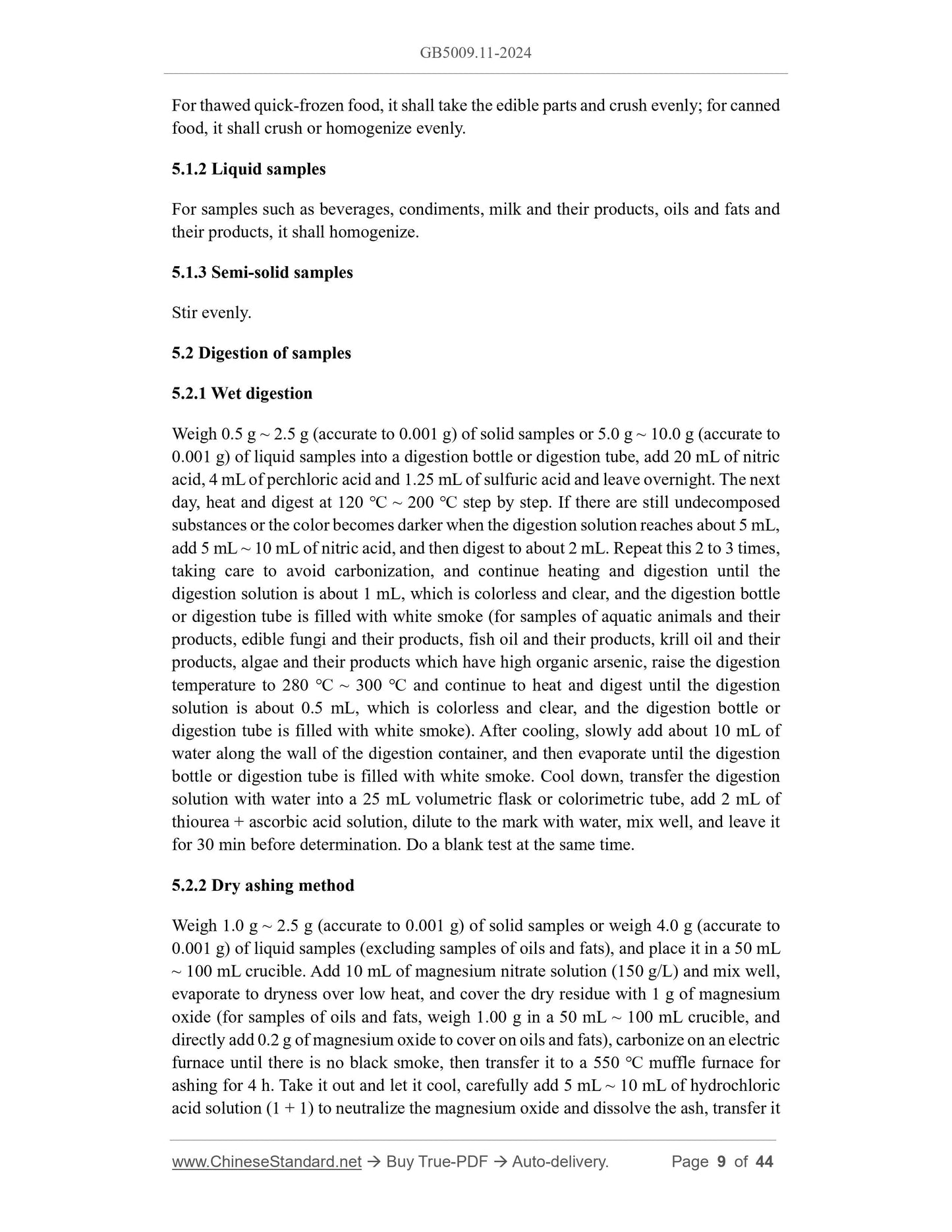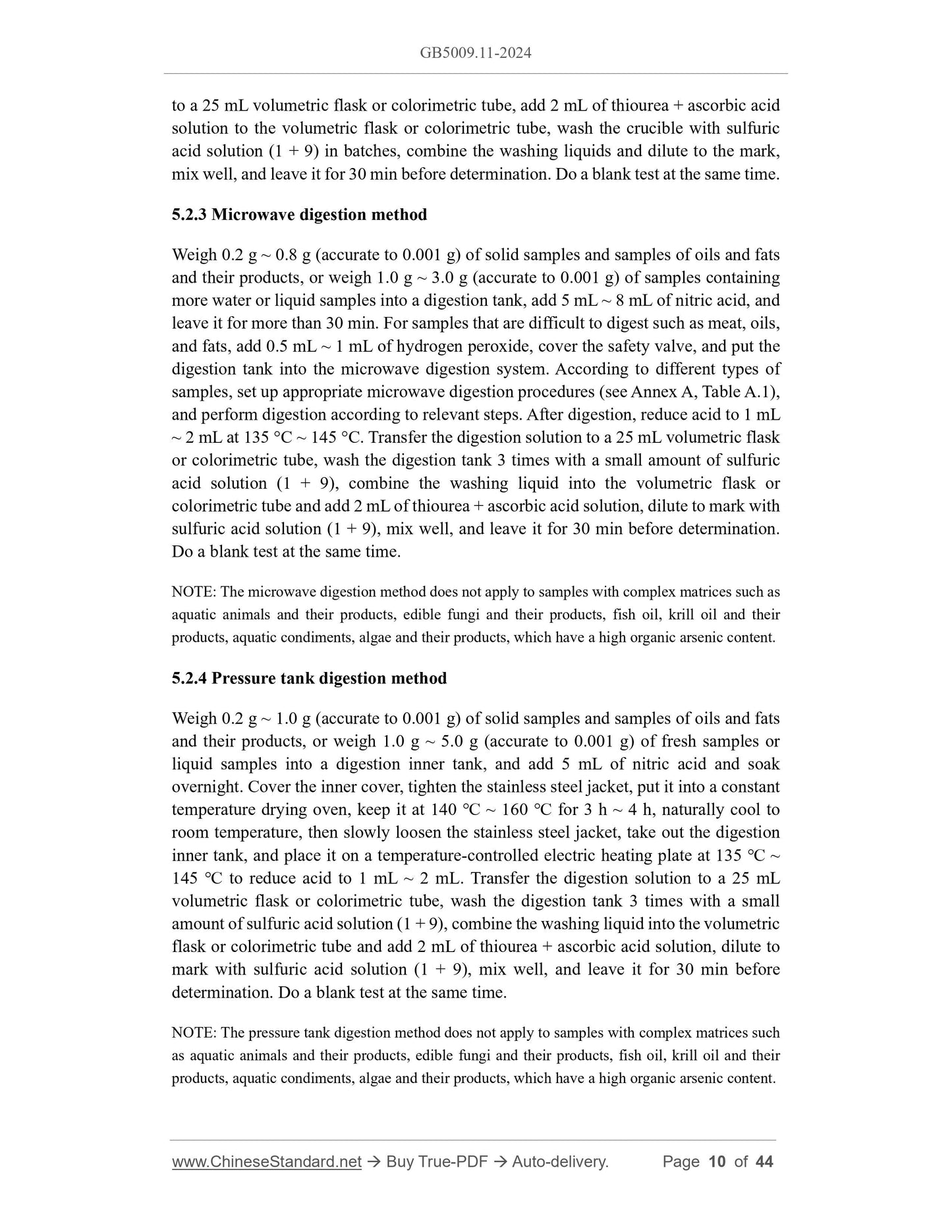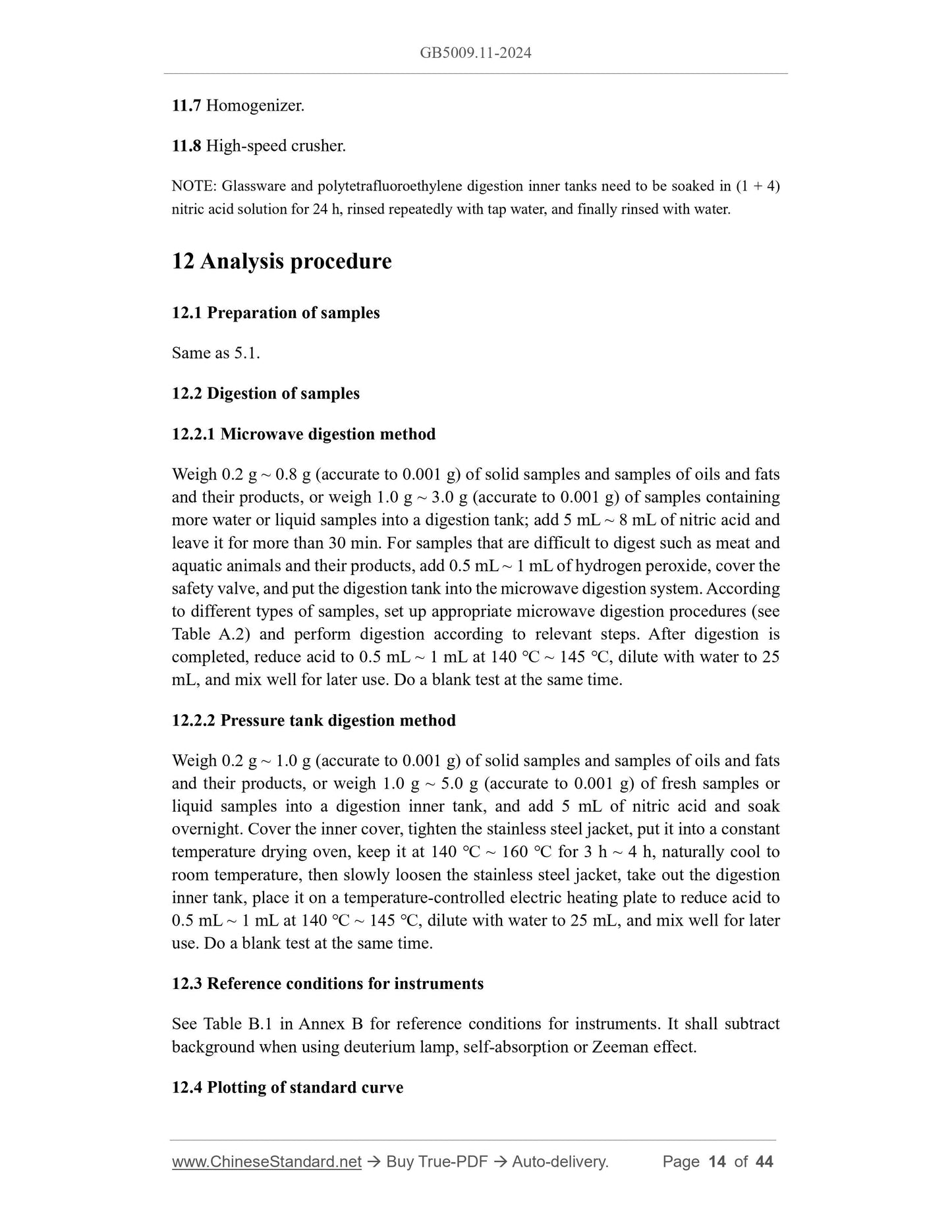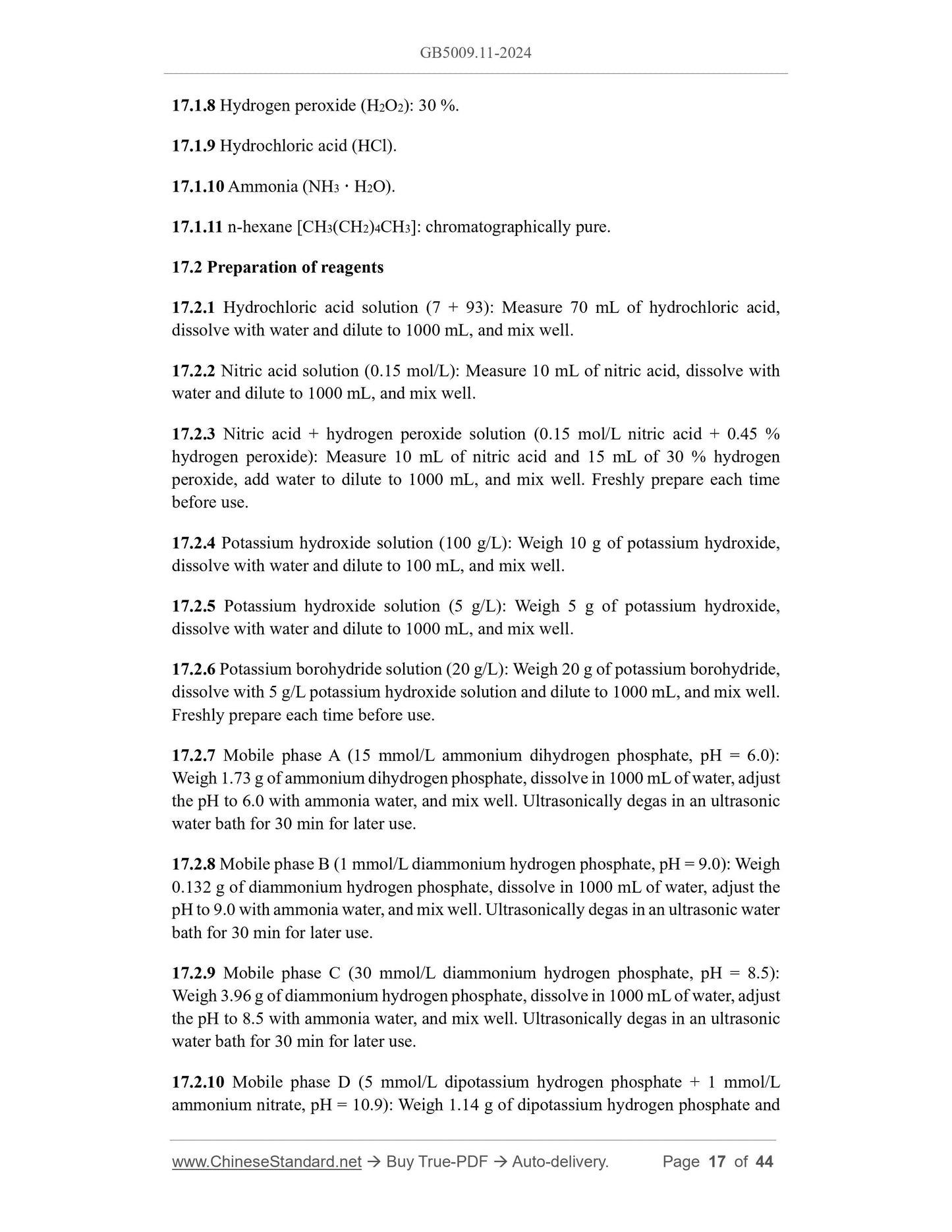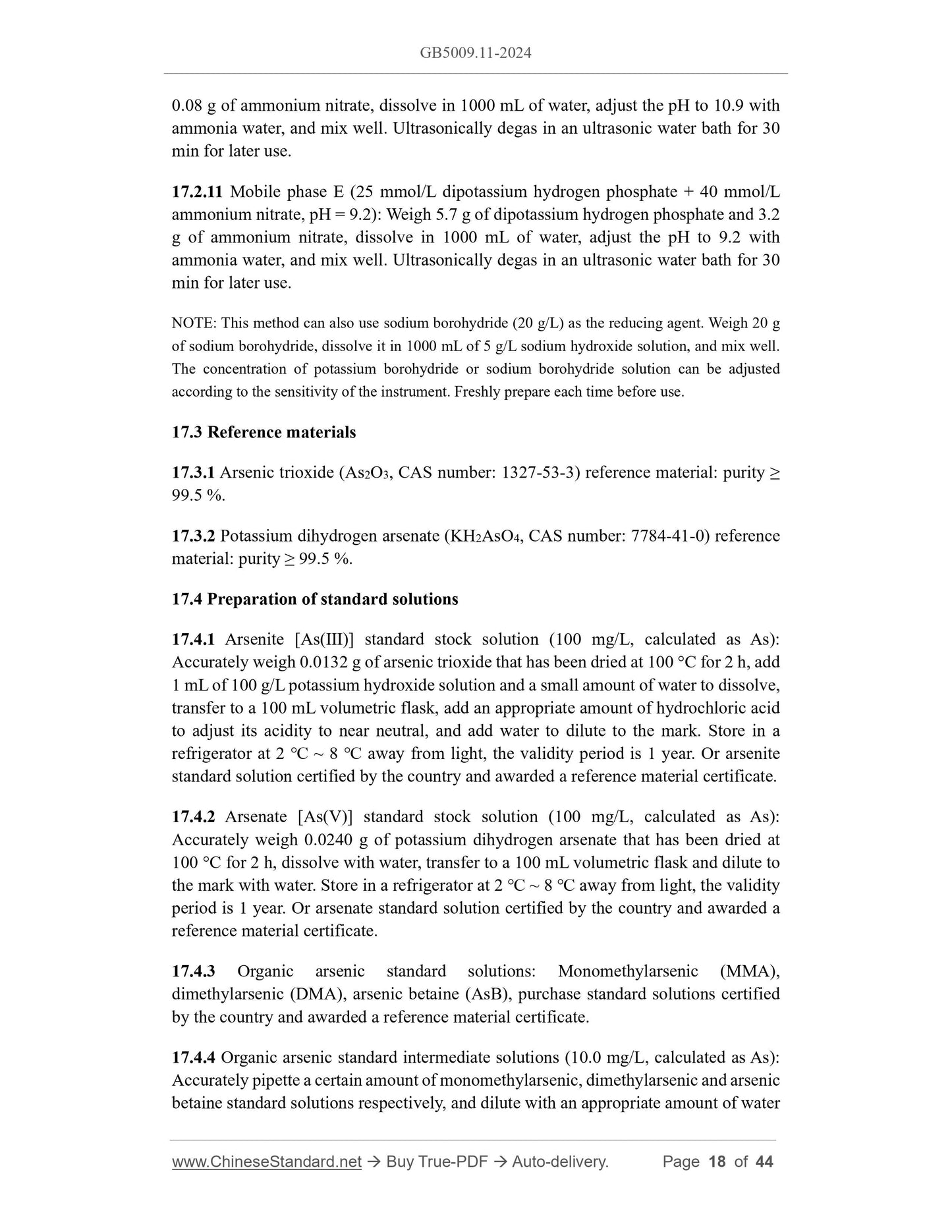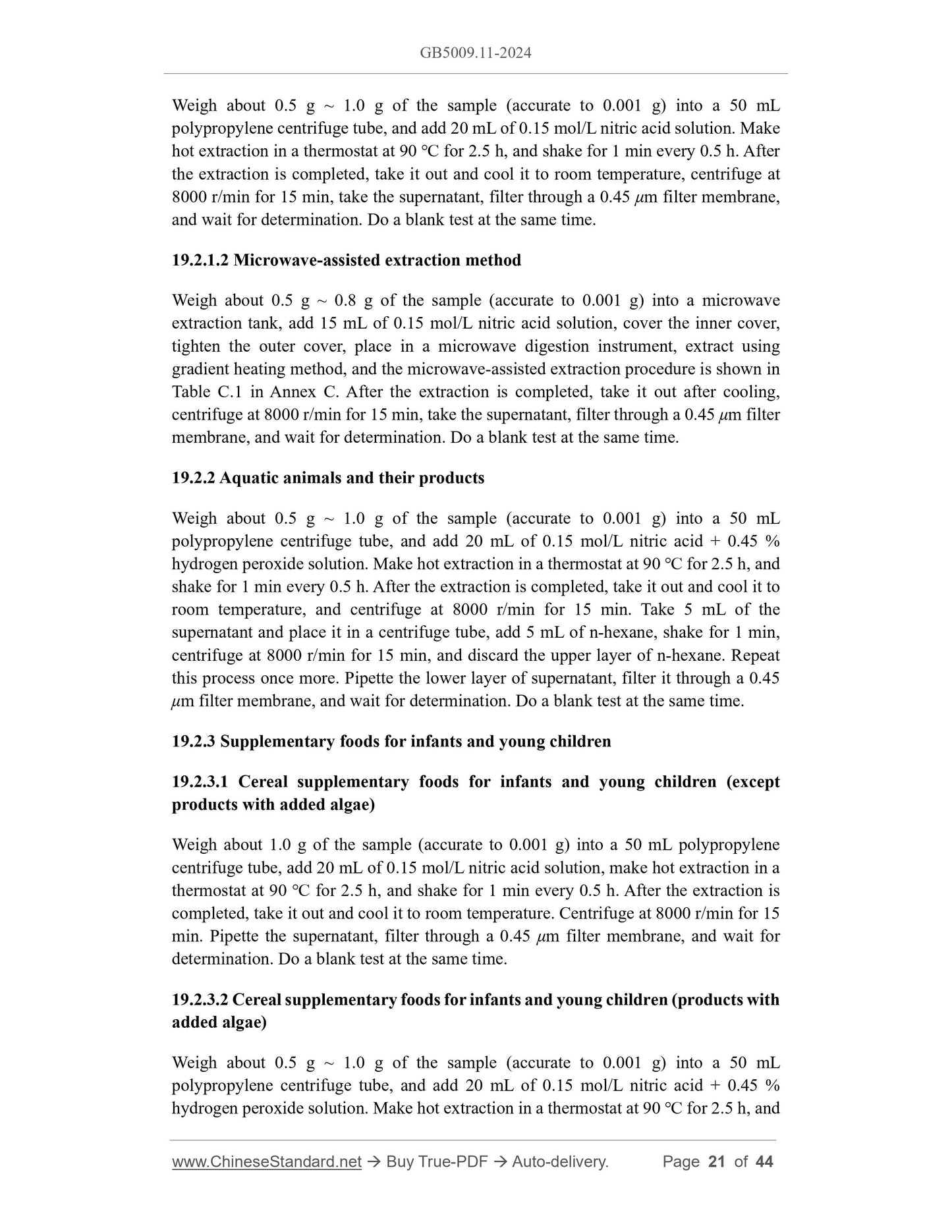1
/
of
12
www.ChineseStandard.us -- Field Test Asia Pte. Ltd.
GB 5009.11-2024 English PDF
GB 5009.11-2024 English PDF
Regular price
$470.00
Regular price
Sale price
$470.00
Unit price
/
per
Shipping calculated at checkout.
Couldn't load pickup availability
GB 5009.11-2024: National food safety standard - Determination of total arsenic and inorganic arsenic in food
Delivery: 9 seconds. Download (and Email) true-PDF + Invoice.Get Quotation: Click GB 5009.11-2024 (Self-service in 1-minute)
Newer / historical versions: GB 5009.11-2024
Preview True-PDF
Scope
Part 1 of this Standard specifies the methods for the determination of total arsenic infood.
Methods I and II of Part 1 of this Standard apply to the determination of total arsenic in
food. Method 3 applies to the determination of total arsenic in food (except milk powder
and prepared milk powder, oils and fats and their products, condiments, and special
dietary foods).
Part 2 of this Standard specifies the methods for the determination of inorganic arsenic
in food.
Part 2 of this Standard applies to the determination of inorganic arsenic in cereals and
their products, aquatic animals and their products, edible fungi and their products, oils
and fats and their products, condiments, supplementary foods for infants and young
children, algae and their products.
Part 1.Determination of total arsenic in food
Method 1 -- Hydride generation atomic fluorescence
spectrometry
Basic Data
| Standard ID | GB 5009.11-2024 (GB5009.11-2024) |
| Description (Translated English) | National food safety standard - Determination of total arsenic and inorganic arsenic in food |
| Sector / Industry | National Standard |
| Classification of Chinese Standard | X09 |
| Word Count Estimation | 29,227 |
| Date of Issue | 2/8/2024 |
| Issuing agency(ies) | National Health Commission of the People's Republic of China, State Administration for Market Regulation |
Share
